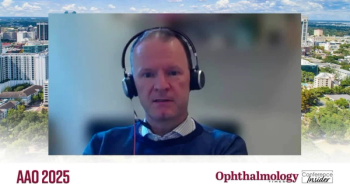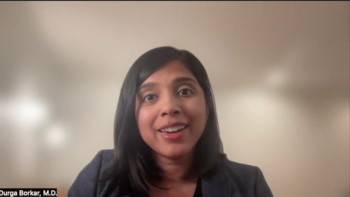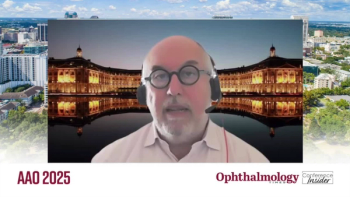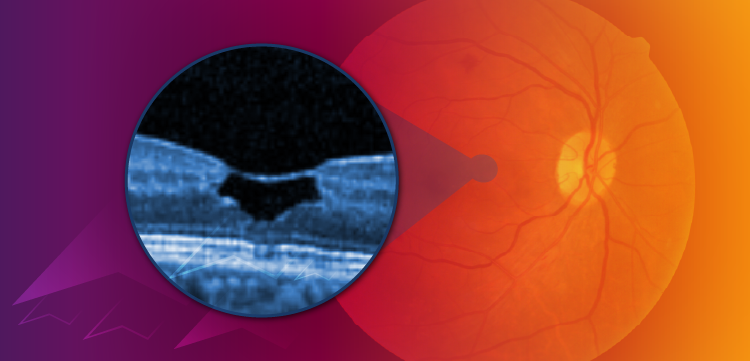
August is Children’s Eye Health & Safety Month
Visual screenings and communication are the most important components when it comes to pediatric ophthalmology, says Dr. Silverstein.
Editor’s Note: Welcome to “Eye Catching: Let's Chat,” a blog series featuring contributions from members of the ophthalmic community. These blogs are an opportunity for ophthalmic bloggers to engage with readers with about a topic that is top of mind, whether it is practice management, experiences with patients, the industry, medicine in general, or healthcare reform. The series continues with this blog by Alan B. Richards, MD. The views expressed in these blogs are those of their respective contributors and do not represent the views of Ophthalmology Times or UBM Medica.
For Children’s Eye Health & Safety Month, I thought I would review some simple and helpful information eye-care providers should keep in mind when treating children.
Children, for the most part, do not need complete eye examinations, but they do need serial screening.
Objective, device-based vision screening or photoscreening is an excellent way to accomplish screening in kids. Today’s devices are all excellent when used with the correct referral criteria for the target population and age-group.
This type of screening is not meant to be one and done, however. Vision screening should be performed yearly in children.
For children ages 12 months to 36 months, the American Association for Pediatric Ophthalmology and Strabismus recommends the option of photoscreening. A child who fails the screening will be referred for a complete cycloplegic eye examination.1
Importance of screening
When screenings are performed in the preschool age using a device-such as the Plusoptix Vision Screening Device, SPOT Vision Screener, iScreen, or GoCheck Kids-risks factors for amblyopia can be identified and treated. Beyond the preschool age, we are researching whether the Plusoptix can be used in school-aged children.
It should be noted that not every child with refractive error needs glasses.
There is an art to prescribing spectacles for children, based on their age, amplitude of their refractive error, risk factors for developing amblyopia, and their individual demands. In short, when to treat nearsightedness or farsightedness is not as cut and dry in children as it is in adults.
Screening devices can refer children who do not necessarily need treatment. A study by Donahue several years ago reviewed eye examination results from children referred to local eye doctors following a statewide preschool photoscreening program.2
The researchers looked to see how often glasses were prescribed for children who did not have amblyopia risk factors (those with false-positive screenings). Of the more than 100,000 preschoolers screened, more than 3,500 children were referred. Close to 900 of examined children did not have amblyopia risk factors, but spectacles were prescribed for 19.5% of these children. Some preschoolers without amblyogenic factors may require spectacle correction, however, many children are probably prescribed glasses unnecessarily.2
Communication is key
Although there can be false-positives screens, many referrals are true-positives and should have a complete eye examination.
The next important step after the screen is getting this child into our office. Communication is key. It starts with the vision screener educating the parent on the reason for the referral and importance of a dilated eye examination. The family needs to have an incentive to have their eye exam.
The communication continues in our office with me discussing with the parents why their child needs to wear glasses, or use a patch or eye drops.
Communication is also essential from the family back to the ophthalmologist-if the child is not wearing his or her glasses or tearing off the patch, I want to know about it before the next follow-up, so we can help them through their challenges. No-shows are a problem in all pediatric care, which is another reason educating our families and caregivers is so crucial.
Dr. Silverstein is a pediatric ophthalmologist, assistant professor in Virginia Commonwealth University’s Department of Ophthalmology, and a member of the Conexus Council for Pediatric Vision and a member of their board. The group’s stated mission is to eliminate undetected and untreated vision problems as barriers to success, enabling all children to reach their fullest potential. The Council for Pediatric Vision reviews and recommends protocols and policies relating to Conexus’ public health and community program activities, to guide the continued delivery of best practice comprehensive children's vision programs.
Disclosures:
Dr. Silverstein is a consultant for Welch Allyn.
References:
1. American Association for Pediatric Ophthalmology and Strabismus. Vision screening guidelines. https://www.aapos.org/resources/vision_screening_recommendations. Accessed June 14, 2018.
2. How often are spectacles prescribed to “normal” preschool children. J AAPOS. 2004;8:224-229. https://doi.org/10.1016/j.jaapos.2004.05.004. Accessed June 14, 2018.
Newsletter
Don’t miss out—get Ophthalmology Times updates on the latest clinical advancements and expert interviews, straight to your inbox.






















































.png)


